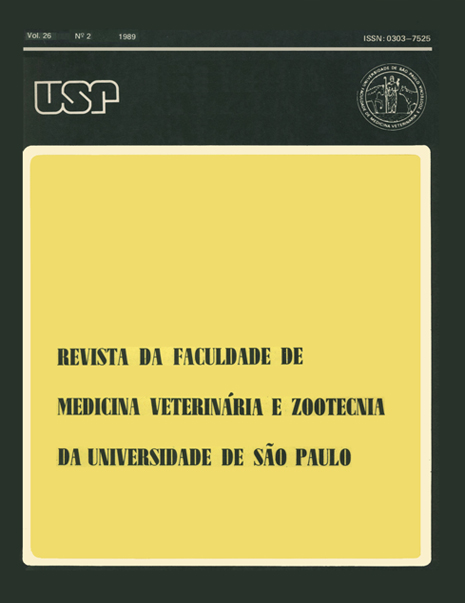Nutritive value of Elephant grass (.Pennisetum purpureum, Schum), Mineiro and Vruckwona cultivars silage submitted to wilting and to different fermentation additives inhibitors
DOI:
https://doi.org/10.11606/issn.2318-3659.v26i2p249-258Keywords:
Silage, Elephant grass, Formaldehyde, Formic acid, Forrage, digestibilityAbstract
The Elephant grass (.Pennisetum purpureum, Schum), Mineiro and Vruckwona cultivars, were cutted at 75 days of growth and were submitted to 4 treatments for ensilage: wilting under the sun for 8 hours and addition to the fresh and chopped material of 0.5% formol (40% formaldehyde); 0.5% formic acid and 0.2% "Viher" solution (70% formol + 26% formic acid + 4% water). "In vivo" digestibility tests were carried out in sheep. Correlations between the intake and the silage quality parameters were calculated. It was concluded that: a) The wilting and formic acid provided higher apparent digestibility coefficients of crud protein (58.30 and 50.86%, respectively) than the silages subjected to "Viher" solution (45.30X); b) formol decreased the crude protein apparent digestibility coefficient (41.96X); c) in general the dry matter and fibrous components apparent digestibility coefficients were better in the Vruckwona cultivar's silages than Mineiro excluding that treated with formol, which showed different behaviour; d) the digestible dry matter intake (g/kg 0,75) of the silages submitted to wilting (24.25g) was higher than "Viher" solution silages (17.58 g); e) only the wilting and acid formic silages, with T.N.D. intake respective of 350.61 to 434.74 g/day and 358.62 to 371.29 g/day could attend the energetic requirement of sheep maintenance.


